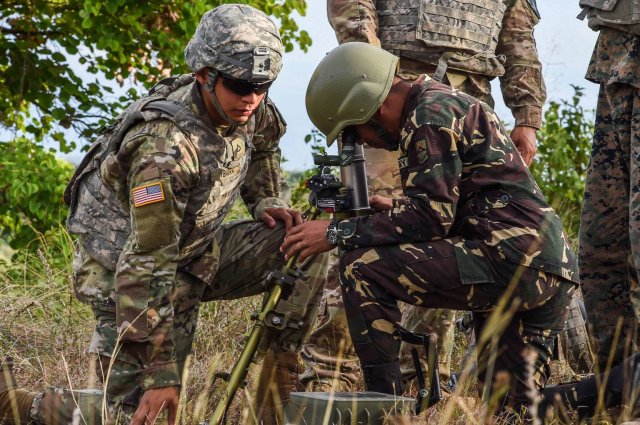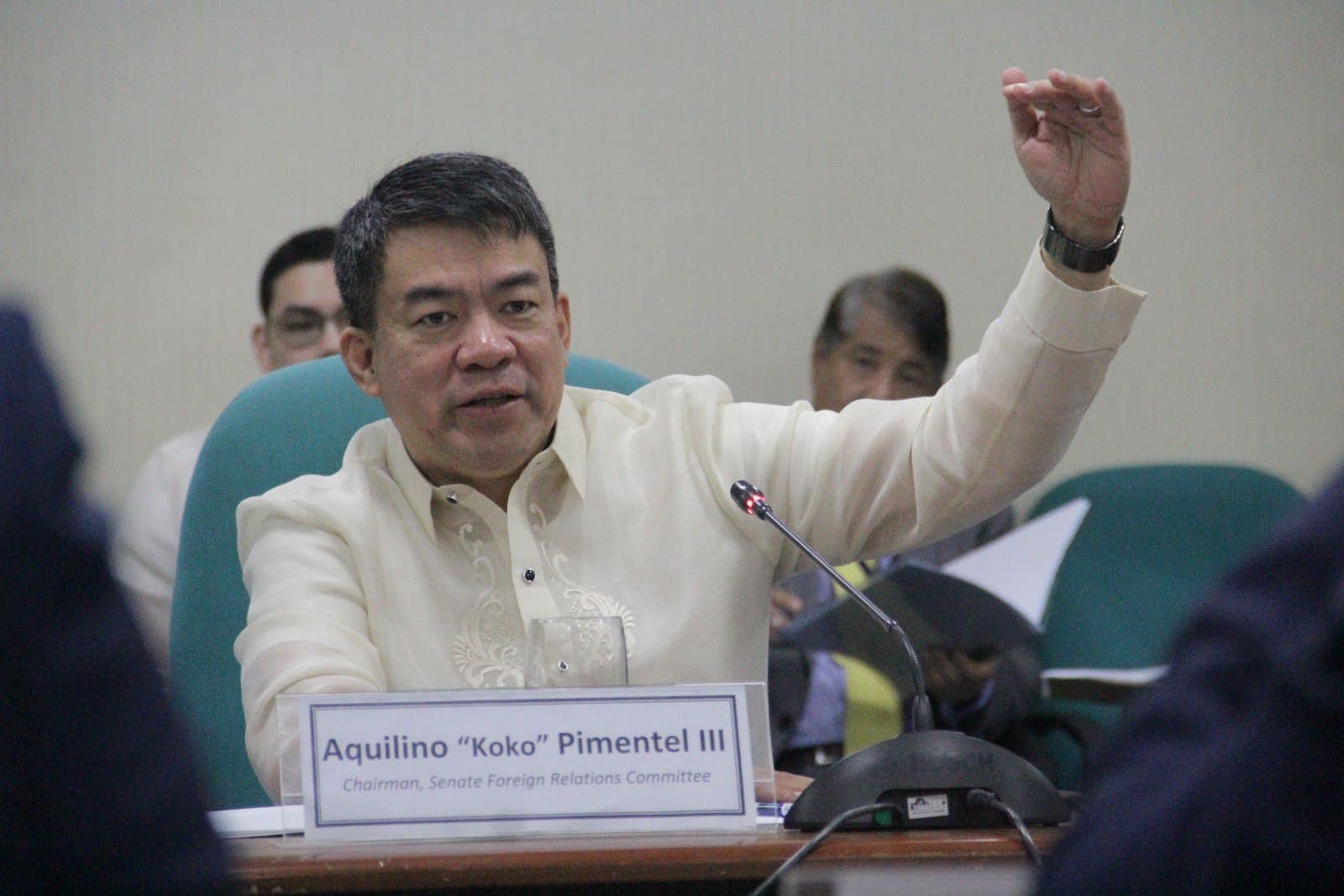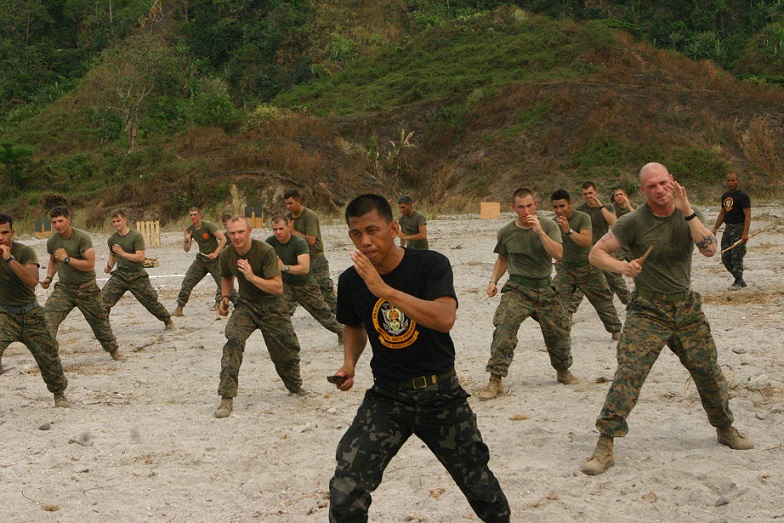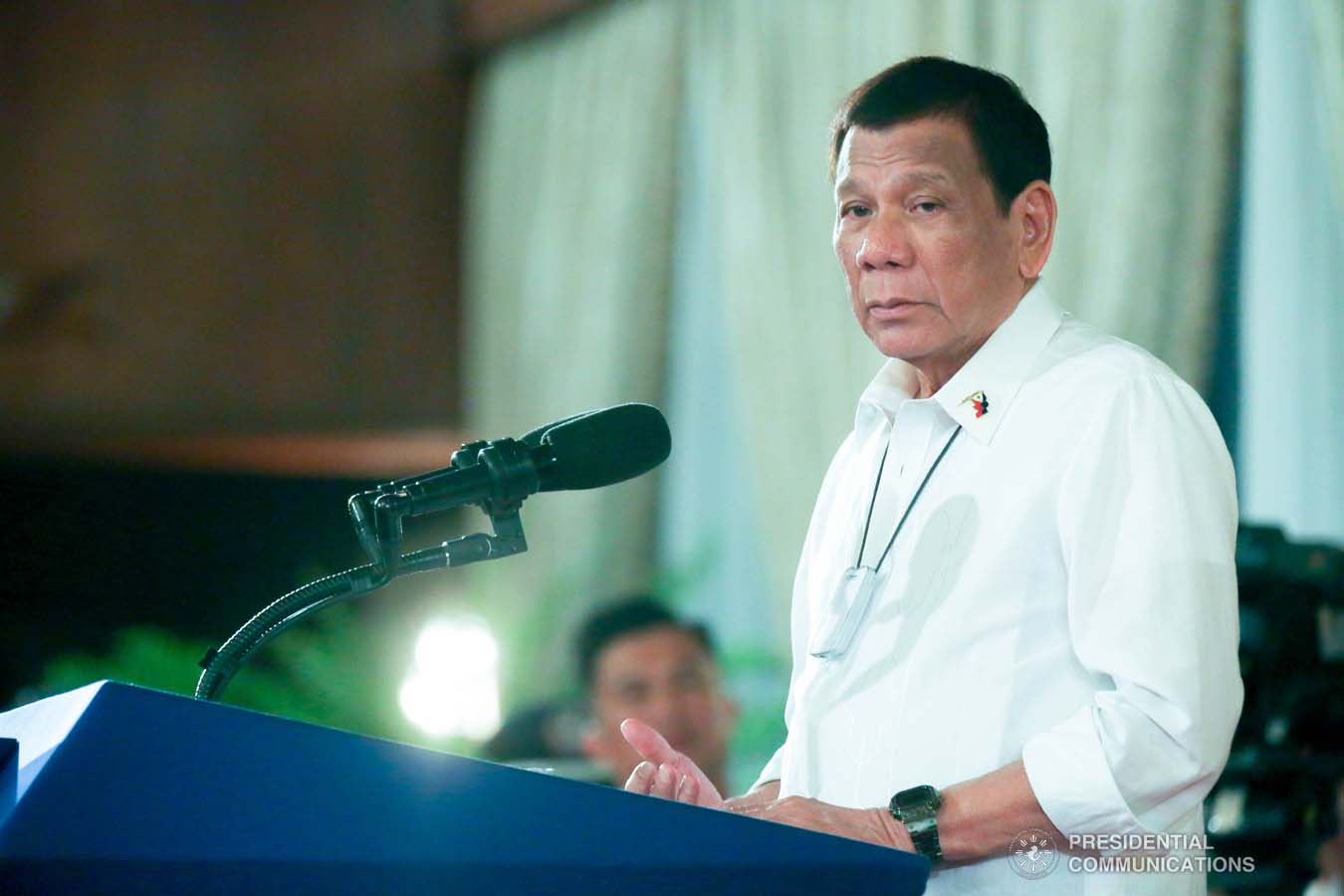Foreign Affairs Secretary Teodoro Locsin Jr. told senators on Feb. 6 that the government has yet to send its notice of termination of the Visiting Forces Agreement (VFA) to the United States.
In a Senate hearing held to review the VFA, amid President Rodrigo Duterte’s threat to terminate the treaty, Locsin said “there is value in revisiting the VFA to address issues of sovereignty, such as jurisdiction and custody.”
In a resolution, at least three senators, including Senate President Vicente “Tito” Sotto III, called on the president to reconsider, saying the Senate should be given the opportunity to:
“[assess the] impact of the withdrawal on the country’s security and economy, specifically with regard to intelligence information sharing, military aid and financing, and technical assistance extended by the [U.S.] relative to the continuing threats posed by domestic and foreign terrorist groups, and ultimately, to the stability and security in the Asia Pacific region.”
Source: Senate P.S. Res. 312, Feb. 3, 2020
Palace Spokesperson Salvador Panelo explained that Duterte’s decision was a result of an “accumulation…of disrespectful acts” by U.S. officials, with the cancellation of former police and corrections chief Sen. Ronald “Bato” Dela Rosa’s U.S. visa as the “last straw.”
But what exactly is the VFA and why does it matter? Here are five things you need to know.
What is the PH-US Visiting Forces Agreement?
The VFA is a bilateral agreement between the Philippines and the U.S. that outlines the terms and conditions on the entry and visit of U.S. armed forces in the country, paving the way for activities such as Balikatans (shoulder-to-shoulder), or large-scale joint military trainings.
It lays out rules on travel privileges accorded to U.S. personnel; the importation and exportation of U.S. equipment, materials, and supplies, as well as the movement of U.S. aircrafts, vessels, and vehicles within the country. The agreement also defines the rights of both governments on jurisdiction over U.S. forces who commit criminal acts while in the Philippines.
The VFA was signed in February 1998, under the term of then President Fidel V. Ramos, and was followed by a counterpart agreement in October, which dealt with Filipino personnel visiting the U.S. It was ratified shortly after by President Joseph “Erap” Estrada, Ramos’ successor, and officially entered into force in June 1999 following the concurrence of the Philippine Senate.
The Philippines also has a status of visiting forces agreement with the Australian government, and has been negotiating a similar deal with Japan since 2015, as reported by ABS-CBN and Inquirer.net.
How does it relate to other PH-U.S. defense agreements?
The VFA is an implementing agreement of the 1951 Mutual Defense Treaty (MDT), in which both countries agree to respond in “unity” to any external armed attack on their territory, armed forces, public vessels, and aircraft.
The terms stated under the VFA are “likewise applied to the entry and temporary stay” of U.S. forces under the Enhanced Defense Cooperation Agreement (EDCA), another implementing agreement of the MDT signed in 2014, according to a Department of Foreign Affairs explainer.
EDCA allows U.S. forces to use and access “agreed locations” in the country for security cooperation exercises and humanitarian and disaster relief activities, among others, as well as to “preposition and store” materials and equipment for the same purposes.
“Agreed locations” under EDCA pertain to areas and facilities of the Philippine government that U.S. forces have the “right” to access, as “mutually agreed” by both countries.
Can Duterte terminate the VFA without the concurrence of the Senate?
The question of whether the president can unilaterally terminate a treaty or an agreement with other countries has yet to be decided by the Supreme Court (SC). (See VERA FILES FACT CHECK: Pimentel’s claim that Duterte may unilaterally cancel the VFA needs context)
Under sec. 21, article VII of the 1987 Constitution, the concurrence of “at least two-thirds” of all members of the Senate is required for a “treaty or international agreement” to be deemed “valid and effective.” It does not specify if the same is necessary to terminate an agreement.
In a Jan. 24 tweet, Foreign Affairs Secretary Teodoro Locsin Jr. said he and Defense Secretary Delfin Lorenzana have started the termination process for the VFA by “first contacting the Senate because [the VFA] is a treaty” on the side of the Philippines.
The VFA remains “in force” until after 180 days from the date the Philippines notifies the U.S., or vice versa, in writing that it wants to terminate the agreement.
How would scrapping the agreement impact the country?
The “most direct” effect of terminating the VFA would be on the issue of jurisdiction over crimes committed by U.S. personnel on Philippine soil, international law professor Romel Bagares told VERA Files in an email.
In such a case, Bagares said the Philippines would have “exclusive jurisdiction,” as opposed to now where the U.S. “may request” the Philippines to “waive” its right to primary jurisdiction.
It would entail the transfer of U.S. Marine Joseph Scott Pemberton, who is currently serving a 10-year sentence in a facility of the Armed Forces of the Philippines (AFP) for killing Filipino trans woman Jennifer Laude in 2014, to the National Penitentiary Prison, Bagares explained. Pemberton has been detained at the AFP Custodial Center “pursuant to an agreement” between the two countries under the VFA.
The withdrawal would also “lead to the suspension” of Balikatans between the Philippines and the U.S., and impact similar activities conducted by both countries in the West Philippine Sea, Bagares said.
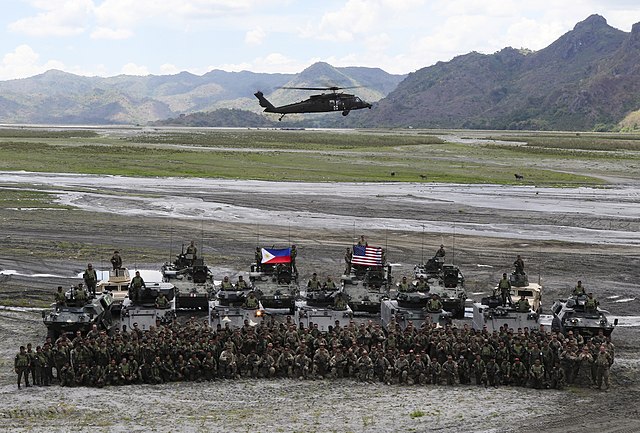
American and Filipino troops pose for a photo after completing a
Combined Armes Live-Fire exercise uring Balikatan 2019 at the Colonel
Ernesto Ravina Air Base on April 10, 2019. Photo from Wikimedia Commons.
It would thus “render pointless” joint military exercises, according to retired Philippine diplomat Gilberto Asuque, who told VERA Files in a text message that:
“No foreign power would deploy men and material in another territory without a VFA (unless it is an invasion).”
While Duterte has not threatened to withdraw from the MDT and EDCA, both would still be affected. For instance, without the VFA, joint training exercises would be limited only to “agreed locations” under EDCA, Bagares said. It would likewise impact the VFA counterpart agreement, he added.
“In the long term, the AFP will rely solely on the Filipino taxpayers to enhance their capabilities. The U.S., at the moment, is the [Philippines’] only defense partner,” Asuque said.
What are the issues that have hounded the VFA?
The VFA has undergone scrutiny several times since its ratification. Here are some of the major issues that have hounded the agreement.
